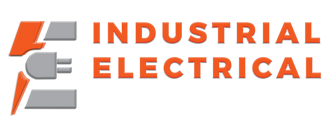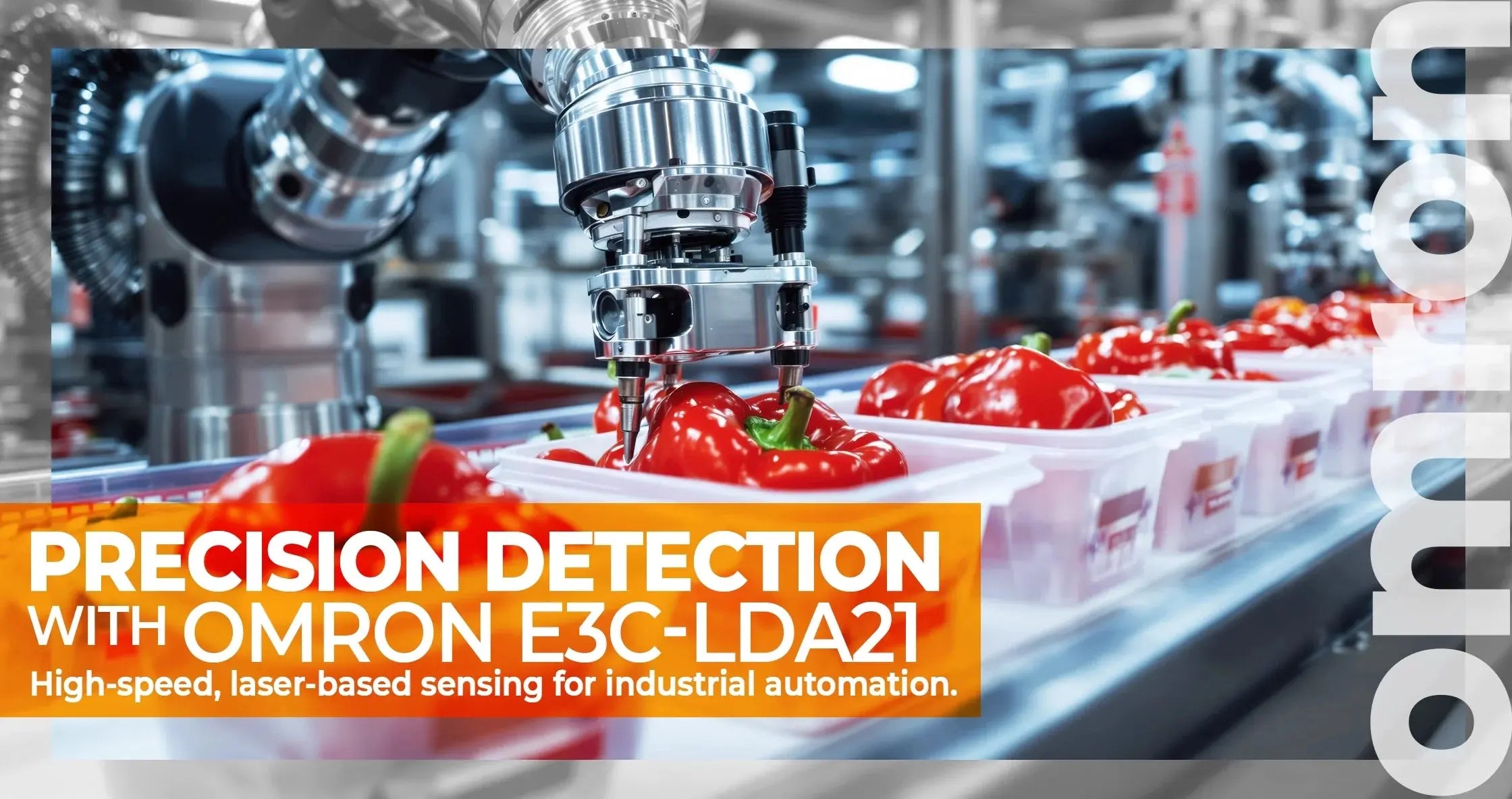In the world of industrial automation, precision, reliability, and speed are paramount. Among the many components that ensure these qualities, the Omron E3C-LDA21 Photoelectric Sensor stands out as an advanced solution for high-performance detection tasks. This sensor integrates a visible laser light source, versatile operating modes, and flexible connectivity, making it indispensable in a variety of applications from conveyor systems to precision assembly lines.
This blog provides a deep dive into the Omron E3C-LDA21 Photoelectric Sensor — exploring its specifications, the significance of each technical detail, practical applications, and compatibility with other systems. Whether you’re an engineer, technician, or procurement specialist, this guide will help you understand why the E3C-LDA21 is one of the most reliable choices for photoelectric sensing.
What is the Omron E3C-LDA21 Photoelectric Sensor?
The Omron E3C-LDA21 Photoelectric Sensor is a laser-based photoelectric amplifier unit designed for use with Omron’s E3C series sensor heads. It operates on 12 to 24 VDC and outputs via NPN (sinking) transistor configuration, making it compatible with a wide range of PLCs and control systems. With selectable Light-ON/Dark-ON modes, a visible 650 nm laser beam, and external input functionality, it delivers flexibility and precision for demanding detection environments.
Unlike conventional diffuse or retroreflective sensors, the Omron E3C-LDA21 Photoelectric Sensor provides a compact yet powerful platform for precise sensing tasks that require high repeatability and fast response times.
Key Specifications of the Omron E3C-LDA21 Photoelectric Sensor
Below is a detailed look at the specifications that define the Omron E3C-LDA21 Photoelectric Sensor:
● Power Supply: 12–24 VDC (±10%)
● Output Type: NPN open collector
● Output Capacity: Up to 50 mA (max residual voltage 1V)
● Light Source: 650 nm visible red laser diode (Class 2 laser) (3 mW max)
● Operating Modes: Light-ON / Dark-ON selectable
● Response Time: 100 µs (super high-speed) to 1 ms (standard)
● Sensing Range: ~30 mm to 1000 mm (diffuse mode with E3C-LD11 sensor head)
● Cable: 2-meter prewired (4-core)
● Material: PBT housing, polycarbonate cover
● Protection: IP50 (dust-protected)
● Weight: ~100 g
Why Each Specification Matters
Supply Voltage
The Omron E3C-LDA21 Photoelectric Sensor operates on a standard 12–24 VDC range, ensuring compatibility with most industrial power systems. The ±10% tolerance provides resilience against voltage fluctuations, reducing downtime caused by unstable power supplies.
Output Type: NPN Open Collector
The NPN configuration allows the sensor to sink current to ground when activated. This standard in industrial automation ensures seamless connection with PLC input modules. Learn more about the differences between NPN (sinking) vs PNP (sourcing) outputs to understand why NPN is a good fit for many PLC systems. The 50 mA switching capacity makes it suitable for direct interfacing with logic controllers, counters, or relay modules.
Laser Light Source
The 650 nm red laser is highly visible, aiding in alignment during installation. As a Class 2 laser, it’s safe under normal operation while providing a narrow, precise beam for detecting small targets or positioning objects accurately.
Response Time
Response times as fast as 100 µs make the Omron E3C-LDA21 Photoelectric Sensor ideal for high-speed production lines. In applications where speed is less critical, operators can switch to high-resolution modes for enhanced stability and noise immunity.
Sensing Range
The ability to detect objects from 30 mm to 1000 mm using the appropriate sensor head provides flexibility across different tasks. Longer ranges allow it to be applied to large conveyors, while shorter ranges are suited to precision assembly work.
Protection and Durability
The IP50 rating means the sensor is dust-protected but not waterproof. It’s best suited for controlled factory environments rather than outdoor or washdown applications. Lightweight housing materials (PBT and polycarbonate) balance durability with ease of installation.
Applications of the Omron E3C-LDA21 Photoelectric Sensor
The Omron E3C-LDA21 Photoelectric Sensor finds use in a wide array of industrial environments. Here are some examples:
1. Conveyor Systems
Used for object detection, counting, and flow control, ensuring packages or products are correctly tracked and sorted.
2. Positioning and Alignment
Detecting precise part placement before machining, welding, or assembly operations. The narrow laser beam allows highly accurate position confirmation.
3. Packaging and Bottling
Ideal for high-speed packaging lines where objects must be detected or counted rapidly. The fast response times reduce missed detections even at high conveyor speeds.
4. Transparent Object Detection
When paired with Omron’s transparent object detection reflectors, the E3C-LDA21 can reliably detect clear bottles, glass, or plastic sheets — tasks that challenge conventional photoelectric sensors.
5. Robotics and Automation
Provides accurate feedback to robotic systems for pick-and-place operations, object sorting, and quality control checks.
Compatibility with Omron Ecosystem
The Omron E3C-LDA21 Photoelectric Sensor is designed to work seamlessly with other Omron products:
● Sensor Heads: Works with E3C-LD and E3C-LR series heads for spot, line, or retroreflective sensing.
● Connection Units: Compatible with Omron E3X-CN21/22 wire-saving connectors, enabling daisy-chaining of sensors.
● Mobile Console: Can be configured using the Omron E3X-MC11-SV2 console for fast parameter setup.
● Controllers and PLCs: Directly integrates with Omron PLC input cards, offering quick installation in existing control systems.
Compatibility with Other Brands
While optimized for Omron systems, the Omron E3C-LDA21 Photoelectric Sensor also integrates easily into third-party automation environments:
● PLC Systems: Compatible with NPN input PLCs from Siemens, Allen-Bradley, Mitsubishi, and others.
● Controllers: Any controller that accepts 12–24 VDC NPN signals can interface with the sensor.
● Mechanical Mounting: May require adaptation when replacing sensors from other brands, as physical dimensions and mounting brackets differ.
Why Choose the Omron E3C-LDA21 Photoelectric Sensor?
The Omron E3C-LDA21 Photoelectric Sensor combines speed, precision, and reliability in a slim, easy-to-install design. Its visible laser beam, selectable response modes, and compatibility with Omron’s ecosystem make it a versatile choice for engineers seeking a robust sensing solution.
Key reasons to choose this sensor include:
● Wide detection range (30 mm – 1000 mm)
● Ultra-fast response time (as low as 100 µs)
● Visible Class 2 laser for easy alignment
● Compatibility with both Omron and third-party systems
● Flexible operation modes (Light-ON/Dark-ON)
Conclusion
The Omron E3C-LDA21 Photoelectric Sensor represents a smart investment for industries where precision and reliability are critical. From high-speed conveyors to robotic systems, its versatility ensures it adapts to a wide range of needs while maintaining consistent performance.
If you’d like to explore how the Omron E3C-LDA21 Photoelectric Sensor can enhance your automation setup, visit the product page here to learn more about its specifications and availability.
Related Product Collections
Photoelectric Sensors →
Discover a wide variety of photoelectric sensors designed for industrial automation. This collection includes models with different sensing ranges, outputs, and beam types to suit diverse applications.
Omron Products →
Explore the full range of Omron products, including sensors, relays, controllers, and automation solutions that integrate seamlessly with the E3C-LDA21.
SICK Photoelectric & Background Suppression Sensors →
Browse alternative sensors from SICK, offering through-beam, retroreflective, and background suppression technologies for different industrial requirements.


